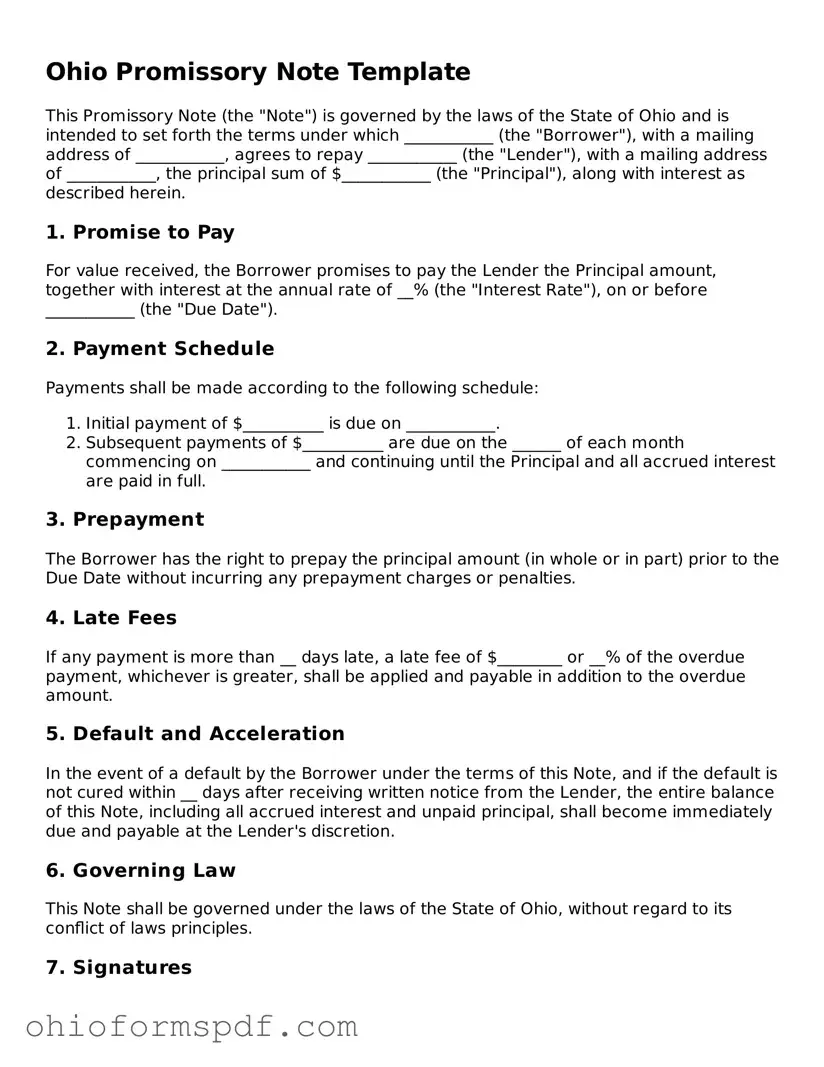Ohio Promissory Note Template
This Promissory Note (the "Note") is governed by the laws of the State of Ohio and is intended to set forth the terms under which ___________ (the "Borrower"), with a mailing address of ___________, agrees to repay ___________ (the "Lender"), with a mailing address of ___________, the principal sum of $___________ (the "Principal"), along with interest as described herein.
1. Promise to Pay
For value received, the Borrower promises to pay the Lender the Principal amount, together with interest at the annual rate of __% (the "Interest Rate"), on or before ___________ (the "Due Date").
2. Payment Schedule
Payments shall be made according to the following schedule:
- Initial payment of $__________ is due on ___________.
- Subsequent payments of $__________ are due on the ______ of each month commencing on ___________ and continuing until the Principal and all accrued interest are paid in full.
3. Prepayment
The Borrower has the right to prepay the principal amount (in whole or in part) prior to the Due Date without incurring any prepayment charges or penalties.
4. Late Fees
If any payment is more than __ days late, a late fee of $________ or __% of the overdue payment, whichever is greater, shall be applied and payable in addition to the overdue amount.
5. Default and Acceleration
In the event of a default by the Borrower under the terms of this Note, and if the default is not cured within __ days after receiving written notice from the Lender, the entire balance of this Note, including all accrued interest and unpaid principal, shall become immediately due and payable at the Lender's discretion.
6. Governing Law
This Note shall be governed under the laws of the State of Ohio, without regard to its conflict of laws principles.
7. Signatures
IN WITNESS WHEREOF, the parties have executed this Promissory Note as of the ______ day of ___________, 20__.
Borrower: _________________________
Lender: __________________________
Notice
This document is to be used in the State of Ohio and may not comply with laws of other states. It is recommended to seek legal advice if there are any questions regarding this Note's enforceability or provisions.
